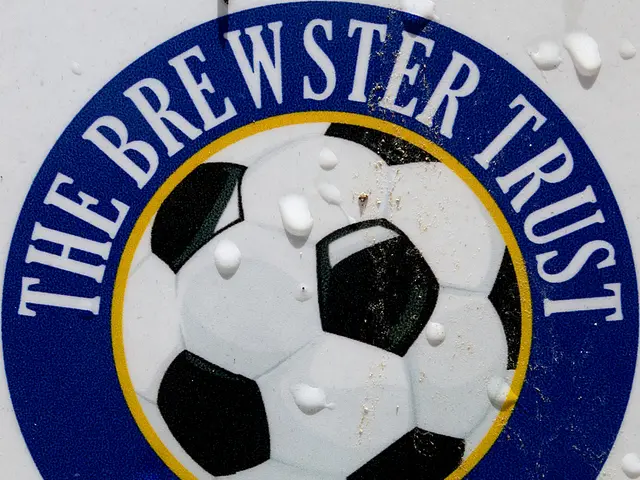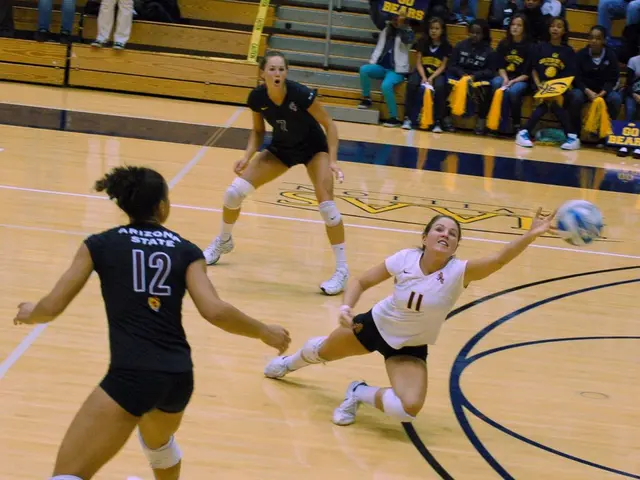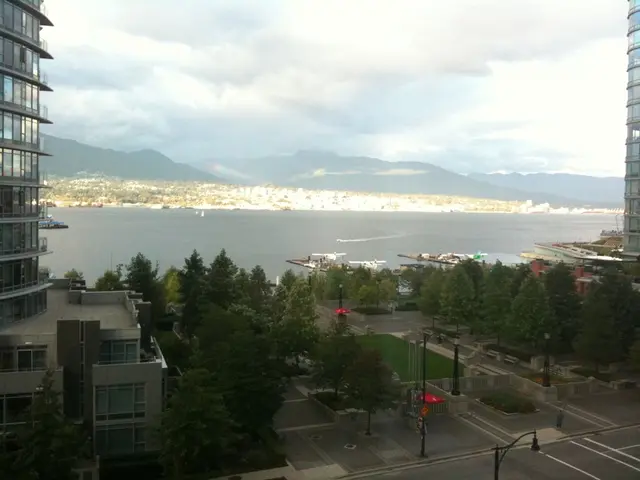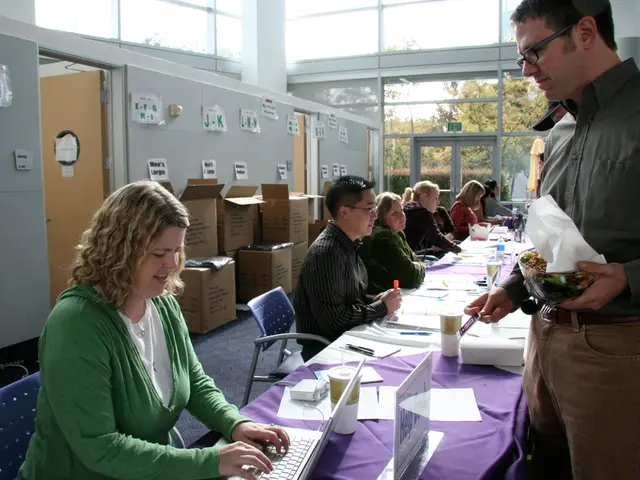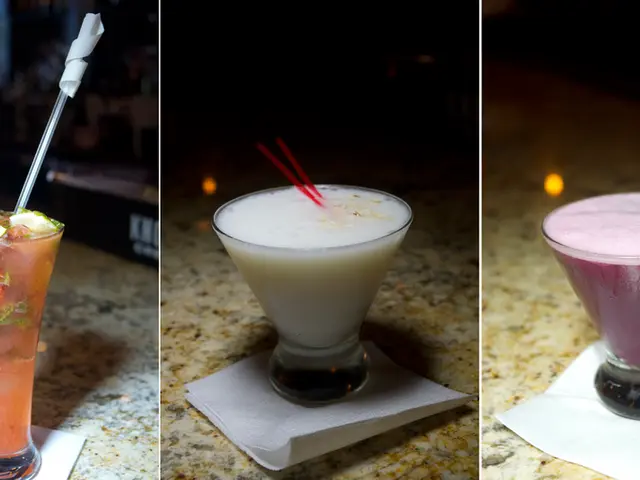Candidates offer subsidies of PHP 20 per kilo on rice supply
On a sweltering Wednesday, April 24, 2025, the Malacañang Palace hosted a gathering of Visayas candidates for the upcoming national and local elections on May 12. The widely-anticipated rice subsidy program, offering rice at a staggering P20 per kilo, was set to launch the following week, as announced a week prior.
"They shouldn't be involved in this. Their faces shouldn't appear on the banners related to this," Palace Press Officer Undersecretary Claire Castro emphasized during a press conference on that day.
"The selling of rice at P20 per kilo is for the public, not for the candidates," she clarified.
Advertisement
The Commission on Elections (Comelec) was, indeed, involved in this funding, as revealed by Department of Agriculture (DA) Secretary Francisco Tiu Laurel Jr. on Wednesday, April 23.
Advertisement
During the 2022 campaign period, Marcos had pledged to lower the rice price to P20 per kilo.
VP SARA's Criticism
In another turn of events, Vice President Sara Duterte expressed her disapproval of the P20-per-kilo rice program by President Marcos.
"Many have already raised concerns that the President might not be able to deliver rice at this price. Now that the goal is slowly being achieved by our government, why are they still speaking negatively? Once again, let me remind everyone: the President's goal is to deliver rice to the public at an affordable price. This was his goal even before, but now our government is striving to make it happen. Don't they support fellow Filipinos, especially the one leading the nation? Don't they aim to eliminate the "crab mentality" and be constructive for the nation? Let's unite to help the President and the government achieve their goal for the people," Castro argued.
"I hope the leaders, the real leaders, and the true Filipino support their fellow Filipinos, especially the one leading the nation. Don't play the part of a crab dragging down others. Unite to help the President and the government achieve their goal for the people," she added.
Advertisement
In an interview in Negros Occidental, Duterte stated that the program was designed to secure support for the administration's senatorial candidates in the 2025 midterm elections in the Visayas. She also expressed doubts about the quality of the rice being sold at a low price.
"They promised to provide rice at such a low price because of the elections and to help their party's senatorial candidates win, as they were abandoned by their two candidates due to lack of direction in their alliance," Duterte claimed.
Duterte was also asked why the program was only being implemented in the Visayas region and not in Luzon and Mindanao, who might also need affordable rice.
"And you're questioning why only Visayas? Aren't people from Mindanao and Luzon also starving? Why only P20 per kilo in Visayas? And why is there a meeting at the Cebu Capitol with most of the governors in the Visayas? So they might have a problem with the vote in the Visayas," the vice president opined. / TPM / our website Philippines
Background of the P20-per-kilo Rice Program
The P20-per-kilo rice program is part of President Ferdinand ‘Bongbong’ Marcos Jr.'s campaign promise to address rice price concerns in the Philippines. The initiative aims to provide affordable rice to marginalized sectors. Initially, the focus is on the Visayas region, prioritized due to the greater need there, with plans to expand the program nationwide once logistical issues are resolved[3].
Current Status in Visayas
The Department of Agriculture (DA), under Agriculture Secretary Francisco "Kiko" Tiu Laurel Jr., is executing this program in the Visayas region. The program targets to sell rice at P20 per kilogram, significantly lower than the current market price of around P32 to P33 per kilo[2][3]. The program is set to commence by the last week of April and will allow each family to purchase up to 10 kilograms per week[3].
President Marcos has directed the DA to ensure the program's sustainability until the end of his administration in 2028[2]. Initially planned to run until December 2025, the program may be extended to February 2026[3].
Controversy and Criticism
Farmers and some critics view the program as a "poll gimmick," suggesting it might not be a long-term solution to the issue of rice prices but rather a political strategy to gain support[1]. The government's ability to continuously subsidize the price difference, estimated at around P13 per kilo, has also raised concerns about the program's economic sustainability[2]. Additionally, ensuring consistent access to quality rice at the subsidized price is a challenge[1][2].
Despite these concerns, Speaker of the House supports the DA's initiative, reflecting some level of political backing for the program[4]. The success of the program will depend on how effectively it can be managed and sustained over time.
- In the Philippines, the upcoming national and local elections on May 12, 2025, found a gathering of Visayas candidates hosted at the Malacañang Palace.
- The rice subsidy program, offering rice at a low price of P20 per kilo, was announced to launch the following week.
- Palace Press Officer Undersecretary Claire Castro emphasized during a press conference that the rice subsidy program was not intended for candidates in the elections.
- However, the Commission on Elections (Comelec) was found to be involved in the funding of the rice subsidy program, according to Department of Agriculture (DA) Secretary Francisco Tiu Laurel Jr.
- During the 2022 campaign period, President Marcos had pledged to lower the rice price to P20 per kilo.
- In response to the P20-per-kilo rice program, Vice President Sara Duterte expressed disapproval, stating that the program was designed to secure support for the administration's senatorial candidates in the 2025 midterm elections in the Visayas.
- VP Duterte also questioned why the program was only being implemented in the Visayas region and not in Luzon and Mindanao, and implied a potential problem with votes in the Visayas.
- The P20-per-kilo rice program is part of President Marcos' campaign promise to address rice price concerns in the Philippines and aims to provide affordable rice to marginalized sectors.
- Despite controversy and criticism, the success of the program will depend on how effectively it can be managed and sustained over time.











